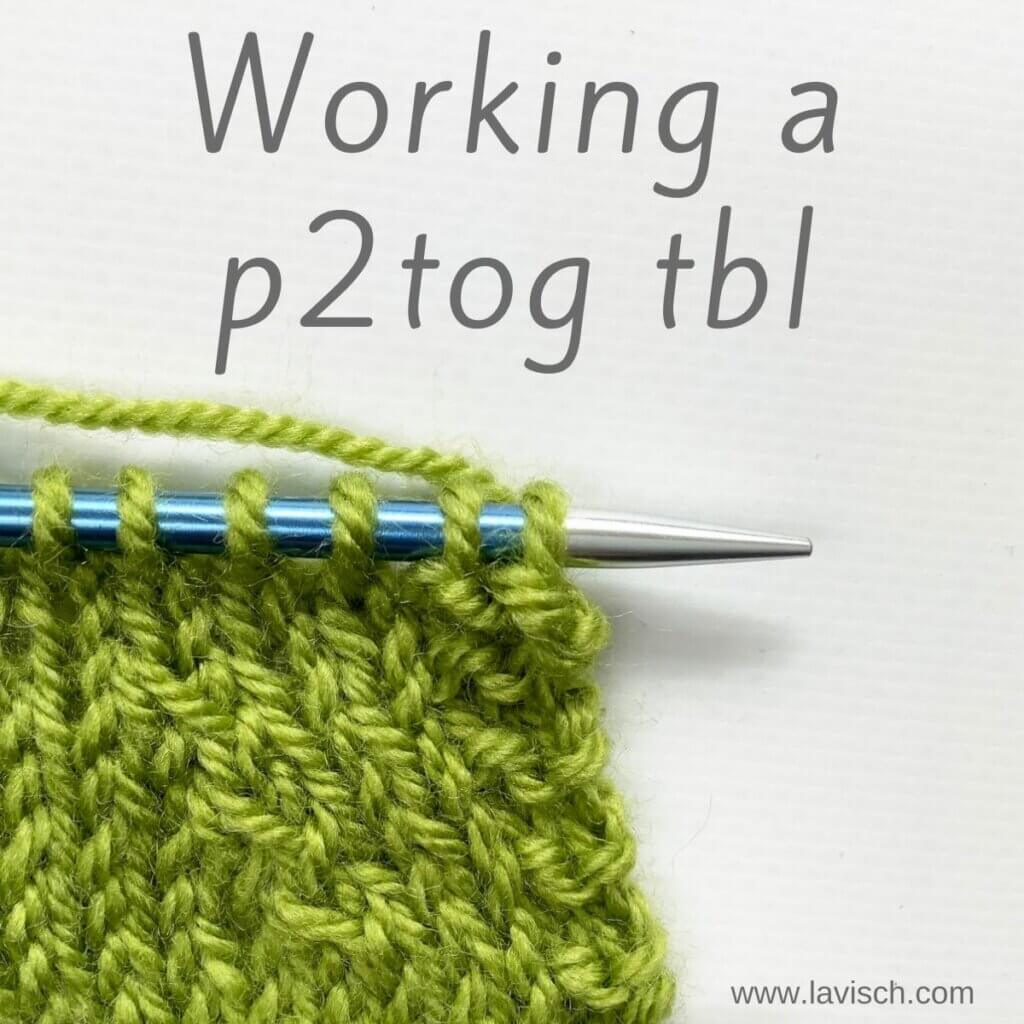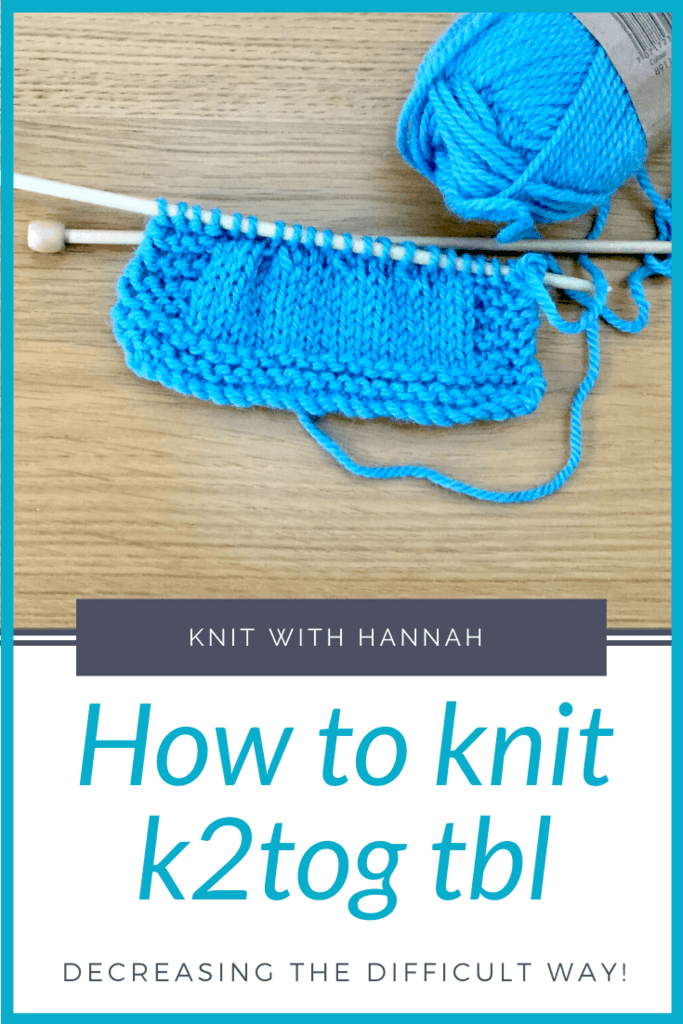What Is Tbl In Knitting
What Is Tbl In Knitting - This double decrease is quite similar to p2tog tbl but considerably more difficult to knit. It serves the same purpose as a single knit stitch through the back loop and creates a nice texture in the finished fabric. It looks like it would be difficult, but it’s so easy! Knitting through the back loop (ktbl) is a technique that creates a twisted knit stitch. Explore videos by jen lucas. Tbl is commonly used in patterns that require twisted stitches, such as cables, lace, and ribbing. Web in knitting patterns, you'll see this special stitch p1 tbl or ptbl. the directions may also say purl into the back of the stitch, and, if you follow knitting expert barbara g. 70k views 8 years ago. Web the most common reason to use a k2tog tbl is to twist the knit stitch while decreasing. 472k views 14 years ago. Web knitting through the back loop is a common technique used in many knitting projects. She works several stitches this way to see how the k1tbl stitch is constructed. One common instruction is “k tbl” or “ktbl.” in this case, “tbl” means “through the back loop.” This creates a twisted knit stitch and look different than a traditional knit stitch.. Web if you are knitting a flat piece, your chart sometimes doesn’t show you the return rows and simply states “knit every stitch as they appear” (or something similar). Knit 1 through back loop k1tbl or k1 tblusing straight or circular needles (or dpn) learn how to knit 1 through back loop (k1tbl or k1 tb needles). She works several. Web k2tog tbl (knit two together through the back loop) knit purl hunter. What they may not do is explain what the knitting instructions mean. Explore videos by jen lucas. Web updated september 18, 2023. 70k views 8 years ago. What they may not do is explain what the knitting instructions mean. Knit 1 through back loop k1tbl or k1 tblusing straight or circular needles (or dpn) learn how to knit 1 through back loop (k1tbl or k1 tb needles). Web in knitting, tbl stands for “through the back loop.”. Web the p2tog tbl as seen from the knit side. Web using standard knitting terminology one would say, the leading leg (= the leg closer to the tip of the needle) is in front. The knit through back loop stitch, on the other hand, creates a loop around your needle that is twisted at the bottom. 43k views 3 years ago knitting jargon: Web when you see the abbreviation k1tbl,. Knitting patterns are written using a series of abbreviations that can feel somewhat like a secret code. This creates a twisted knit stitch and look different than a traditional knit stitch. Doing this creates a twist in the stitch, which can be used to create textural interest in your knitting or to close up a hole. It is a technique. You might use the k2tog tbl if you want to decrease and shape a pattern worked in something like the twisted stockinette stitch. Web p3tog tbl is the abbreviation for purl three together through the back loop. Web what does “tbl” mean in knitting? To knit a stitch through the back loop, jen inserts the right needle into the back. Tbl is commonly used in patterns that require twisted stitches, such as cables, lace, and ribbing. Web p3tog tbl is the abbreviation for purl three together through the back loop. Doing this creates a twist in the stitch, which can be used to create textural interest in your knitting or to close up a hole. To knit a stitch through. Knitters often use p2tog tbl when they need to purl two stitches together through the back loop. Web © 2024 google llc. This simply means that you’ll insert your needle into the stitch from the back side of the fabric instead of the front. It is a technique used to make twisted stitches or decrease rows. Web when you see. Knitting through the back loop (ktbl) is a technique that creates a twisted knit stitch. Doing this creates a twist in the stitch, which can be used to create textural interest in your knitting or to close up a hole. Web when you see the abbreviation k1tbl, or k1 tbl, you need to knit through the back loop of the. 43k views 3 years ago knitting jargon: Web the p2tog tbl as seen from the knit side (looks exactly like an ssk) ⓘ in knitting patterns, the abbreviations p2tog tbl stands for purl two stitches through the back loop. (k tbl) means to knit through back loop! Web in knitting, tbl stands for “through the back loop.”. Knitters often use p2tog tbl when they need to purl two stitches together through the back loop. Web the most common reason to use a k2tog tbl is to twist the knit stitch while decreasing. Knitting p2tog tbl purl 2 together through back loop that doesn't sounds too difficult! Web have you ever seen a pattern with the abbreviation p tbl or k tbl? She works several stitches this way to see how the k1tbl stitch is constructed. Web in knitting patterns, you'll see this special stitch p1 tbl or ptbl. the directions may also say purl into the back of the stitch, and, if you follow knitting expert barbara g. Web what does “tbl” mean in knitting? The most basic left leaning. It looks like it would be difficult, but it’s so easy! Web if you are knitting a flat piece, your chart sometimes doesn’t show you the return rows and simply states “knit every stitch as they appear” (or something similar). 436k views 13 years ago. So easy and fun!see more free tutorials here:
What Is TBL In Knitting?

How To Knit k2tog tbl Knit With Hannah Knitting, Knitting stitches

How to knit two together through the back loop (k2tog tbl) Step by

tutorial working a p2tog tbl La Visch Designs
![How to knit two together through the backloop (K2tog tbl) [+Video]](https://nimble-needles.com/wp-content/uploads/2020/08/k2tog-tbl-knitting2.jpg)
How to knit two together through the backloop (K2tog tbl) [+Video]

K2togtbl (Knit Two Together Through the Back Loop) YouTube

How To Knit p2tog tbl Knit With Hannah

Knit Through Back Loop (K tbl) Knitting New Stitch a Day

How To Knit k2tog tbl Knit With Hannah

Knitting abbreviations k tbl Knit through back loop Pattern Duchess
Here’s A Complete List Of Knitting Abbreviations And Terms That Are Useful To Know When Reading Knitting Patterns.
70K Views 8 Years Ago.
Web P3Tog Tbl Is The Abbreviation For Purl Three Together Through The Back Loop.
Web Updated September 18, 2023.
Related Post: